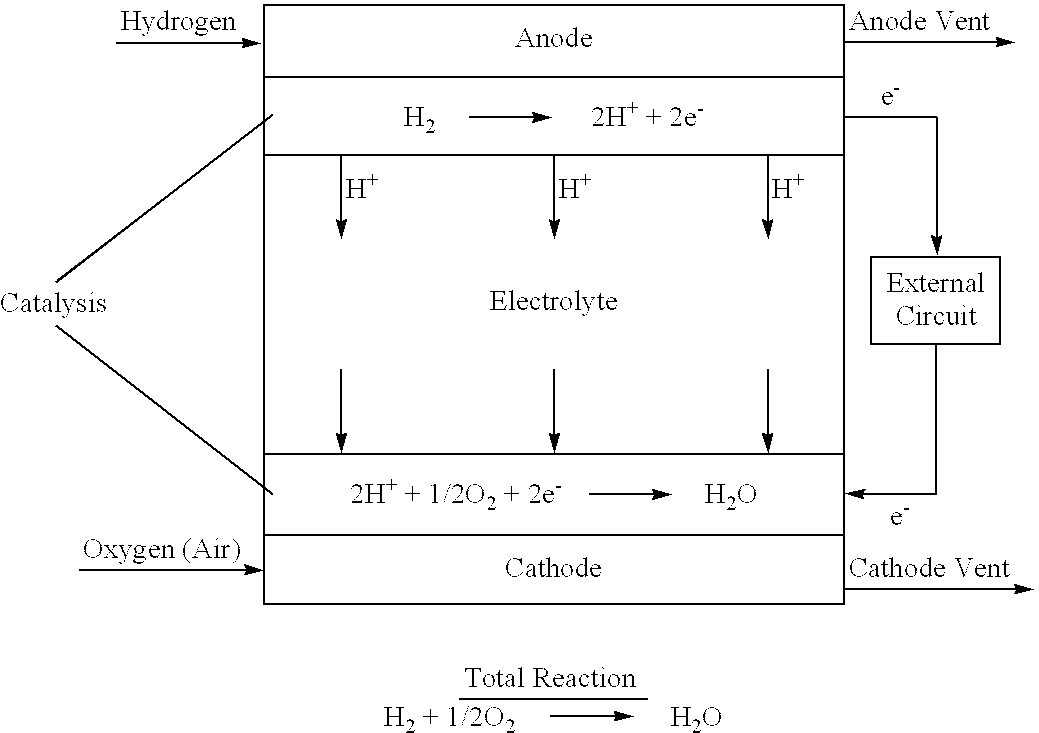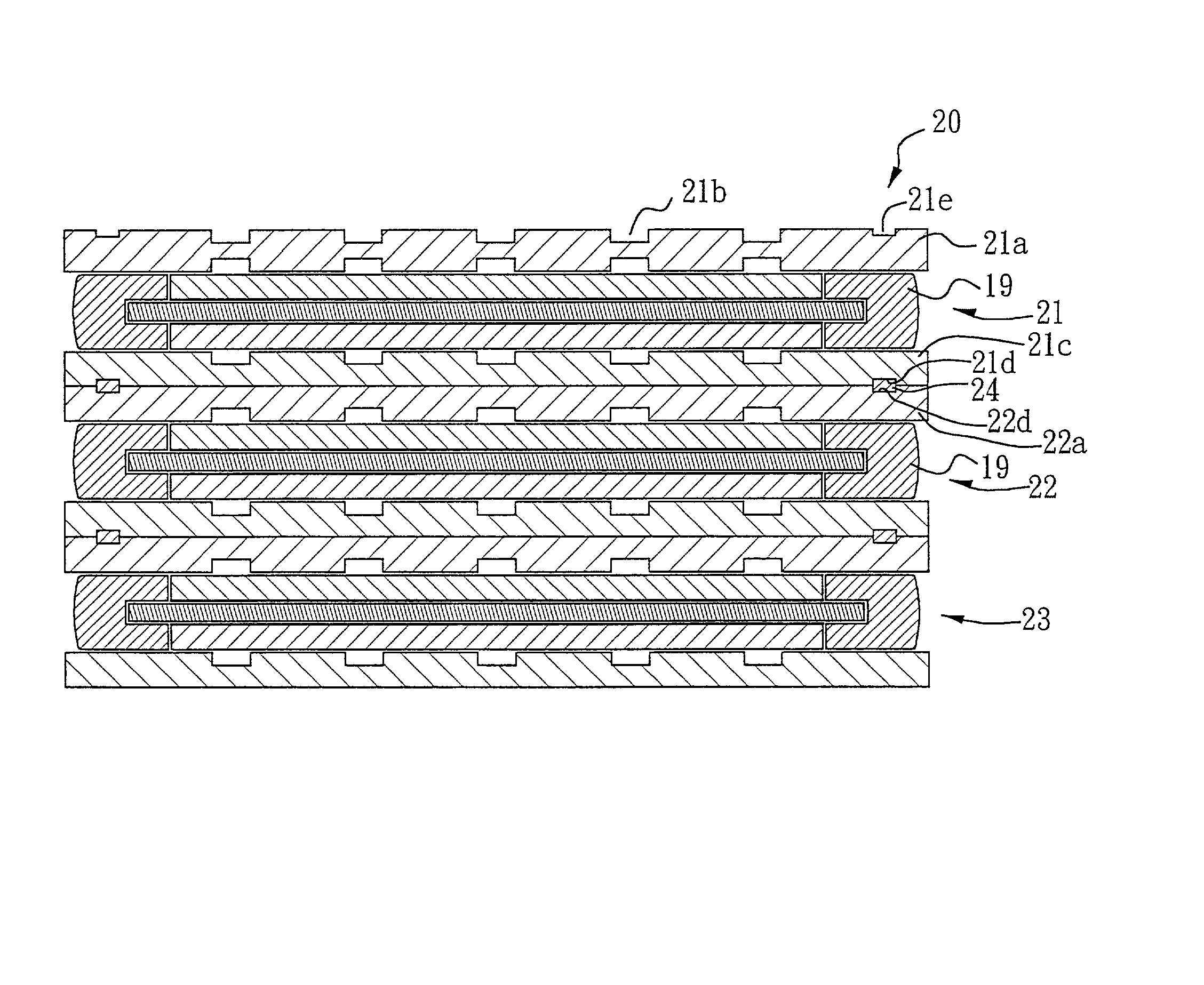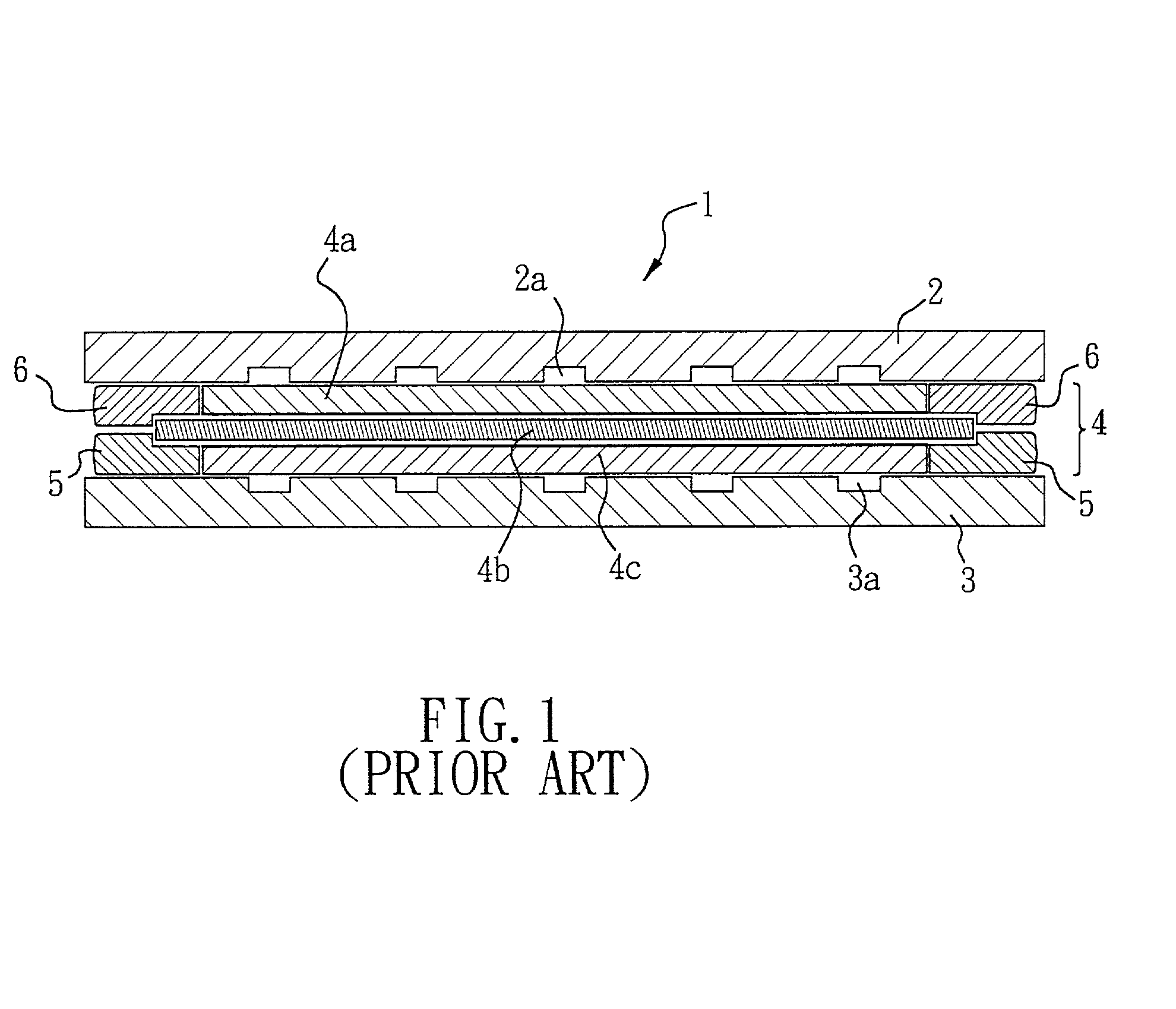Modulized single cell and assembled cell unit of a proton exchange membrane fuel cell
- Summary
- Abstract
- Description
- Claims
- Application Information
AI Technical Summary
Problems solved by technology
Method used
Image
Examples
first embodiment
[0035] FIG. 4 shows the cross sectional view of superimposing a plurality of (by way of example, three layers of) single cells as shown in FIG. 3. The superimposition of the single cells refers to the series connection of common batteries; whereas the reaction of the MEA in each single cell refers to the electro-chemical reaction of the interior between the positive and negative terminals of a common battery. Under the construction, the more single cells which are stacked in a series, the higher voltage output can be attained and the more heat waste will be exhausted. Accordingly, in the event that a considerable number of single cells are stacked onto one another, and they reach such an extent that the heat waste as exhausted is such as cannot be ignored, the anode bipolar plate 21a at the uppermost single cell 21 (or the cathode bipolar plate of the lowermost single cell 23) of the cell unit 20, after stacking, should be additionally formed with a plurality of coolant channels 21b...
second embodiment
[0037] Since the stacking of the single cells utilizes the technology of the cathode bipolar plate in complete contact, in series, with the adjacent anode bipolar plate, the measure to form the cell unit 30 can also refer to the second embodiment as shown in FIG. 5 that integrally combines the anode and cathode bipolar plates to a single piece, namely, a common bipolar plate 31, 32 first and locates the MEA 13 among the cathode bipolar plate 33, common bipolar plate 32, 31, and coolant bipolar plate 34 in a sequential order. Following the measure as introduced with reference to FIG. 3, the RTV is injected to a suitable position and cured at a pre-determined condition, thereby forming a modulized cell unit 30 having an even and equal laminate compression pressure.
[0038] Because bipolar plates are disposed in the single cells for providing the passages for hydrogen, oxygen and coolant, their shapes can be configured to any type as long as they can properly perform the functions of con...
third embodiment
[0039] FIG. 6 shows the cell unit 40 which employs integrally-formed common bipolar plates 41, 42 and is configured to a corrugated shape made of metallic sheets, so as to save costs of material and reduce weights of the whole fuel cell, thereby enhancing the competitive ability in this field.
[0040] The above disclosure is related to the detailed technical contents and inventive features thereof. People skilled in this field may proceed with a variety of modifications and replacements based on the disclosures and suggestions of the invention as described without departing from the characteristics thereof. Nevertheless, although such modifications and replacements are not fully disclosed in the above descriptions, they have substantially been covered in the following claims as appended.
PUM
| Property | Measurement | Unit |
|---|---|---|
| Pressure | aaaaa | aaaaa |
| Angle | aaaaa | aaaaa |
| Electric potential / voltage | aaaaa | aaaaa |
Abstract
Description
Claims
Application Information
 Login to View More
Login to View More - R&D
- Intellectual Property
- Life Sciences
- Materials
- Tech Scout
- Unparalleled Data Quality
- Higher Quality Content
- 60% Fewer Hallucinations
Browse by: Latest US Patents, China's latest patents, Technical Efficacy Thesaurus, Application Domain, Technology Topic, Popular Technical Reports.
© 2025 PatSnap. All rights reserved.Legal|Privacy policy|Modern Slavery Act Transparency Statement|Sitemap|About US| Contact US: help@patsnap.com



